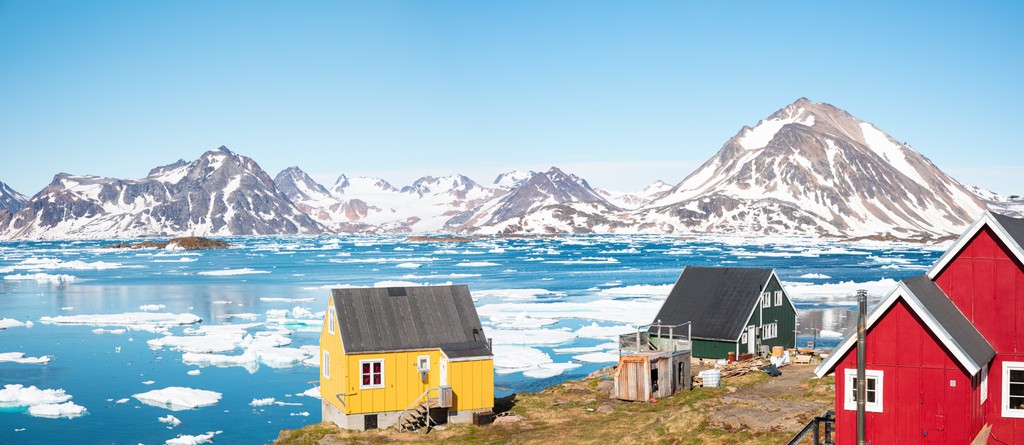Exploring Greenland: A Profound Analysis of its Geography, Climate, and Cultural Significance ===
Greenland, the world’s largest island, is a mesmerizing land of icy landscapes, rugged mountains, and a unique cultural heritage. This article delves into the intricate details of Greenland’s geography, climate, and cultural significance, unraveling the mysteries that make this remote Arctic territory so fascinating. From its awe-inspiring topography to its changing climate and the resilience of its indigenous communities, Greenland offers a wealth of knowledge and exploration for those seeking a profound understanding of this remarkable place.
=== Unveiling Greenland’s Unique Geography and Topography ===
Greenland’s geography is nothing short of extraordinary. Comprising an area of over 2.16 million square kilometers, it stretches from the Atlantic Ocean in the east to the Arctic Ocean in the north. Its vast ice sheet covers approximately 80% of the island, making it the second-largest ice body in the world after Antarctica. The ice sheet is a dominant feature, with towering glaciers that extend into deep fjords, creating a dramatic and breathtaking landscape. Greenland’s topography is characterized by rugged mountains, deep valleys, and vast coastal plains, providing a diverse and captivating environment for exploration and research.
=== Analyzing Greenland’s Climate and its Implications ===
Greenland’s climate is shaped by its high latitude and proximity to the Arctic region. The island experiences an Arctic climate, with long, severe winters and cool summers. However, in recent years, Greenland has become a focal point for climate research due to the significant impact of global warming. The melting of the ice sheet has accelerated, contributing to rising sea levels worldwide. This has profound implications for coastal communities, ecosystems, and global climate patterns. Studying Greenland’s climate is crucial for understanding the effects of climate change on a large scale and developing strategies to mitigate its consequences.
=== Understanding the Cultural Significance of Greenland ===
Greenland’s cultural significance lies in its history, traditions, and unique way of life. Inhabited for over 4,500 years, the island is home to the Inuit people, who have adapted to the extreme Arctic conditions through their deep understanding of the land and its resources. Greenlandic culture is deeply rooted in hunting, fishing, and subsistence farming, with traditions passed down through generations. The preservation of cultural heritage is a priority, and efforts are being made to ensure the continuity of traditional practices, language, and storytelling. Greenlandic culture offers a valuable perspective on sustainable living and the importance of respecting the environment.
=== Unraveling the Mysteries of Greenland’s Indigenous Communities ===
Greenland’s indigenous communities, primarily the Inuit, play a pivotal role in the cultural fabric of the island. Their unique way of life, rich traditions, and knowledge of the land are vital for understanding the complexities of Greenland. The Inuit have a profound connection to nature, viewing it as interconnected with their identity and spirituality. Their close relationship with the environment has allowed them to adapt and thrive in challenging conditions for thousands of years. Exploring the mysteries of Greenland’s indigenous communities offers insights into their resilience, traditional knowledge, and the importance of preserving their heritage for future generations.
=== Implications of Greenland’s Environmental Changes for the Future ===
As Greenland faces unprecedented environmental changes, it is essential to consider the implications for its future. The melting ice sheet and rising sea levels pose significant challenges for coastal communities, wildlife habitats, and global climate stability. Understanding these changes is crucial for developing sustainable strategies and policies to mitigate the impacts. Additionally, exploring alternative energy sources and promoting sustainable practices can help reduce Greenland’s carbon footprint. By addressing the environmental challenges facing Greenland, we can work towards a more resilient future for both the island and the planet as a whole.
Exploring Greenland’s geography, climate, and cultural significance reveals a land of extraordinary beauty and untapped potential. From its awe-inspiring landscapes to the resilience of its indigenous communities, Greenland offers a deep understanding of the intricate relationship between humans and the environment. As we analyze Greenland’s geography, climate, and cultural significance, we gain valuable insights into both the past and the future, reminding us of the importance of preserving this unique Arctic territory for generations to come.

